
King Armored Car.

The armored flaps that protected the engine are open on this car, and its fenders/ditch bridging planks are mounted on the sides. A large spotlight is mounted on the hood; some Kings instead had one or two headlights mounted on the side of the engine compartment. This car is fitted with wire spoke wheels and pneumatic tires. The rear axle would have dual tires with this setup. (Picture from Development of Armored Vehicles, volume II: Armored Cars, Scout Cars, and Personnel Carriers.)
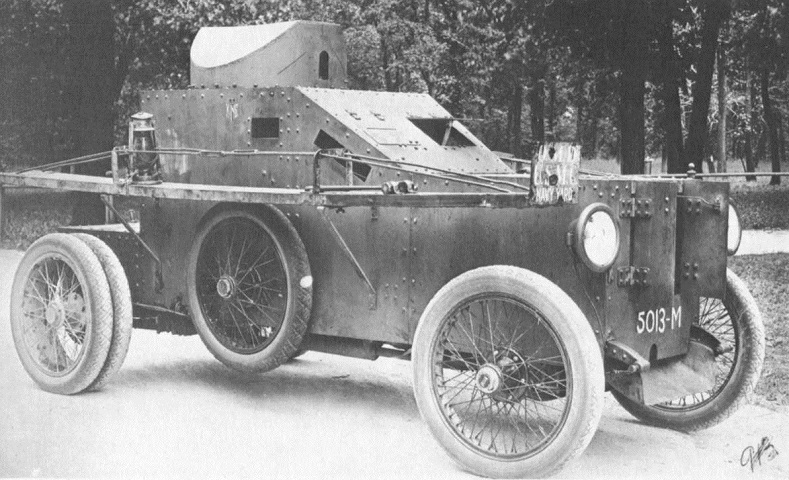
The stepped rear can be glimpsed in this view, and this car is fitted with dual headlights instead of the single spotlight of the vehicle above. (Picture from Tank Data, vol. 2.)

The opposite side of the car can be seen here with it slung in the air. The machine gun is mounted in the turret. (Picture taken by Underwood & Underwood; available from the National Archives.)
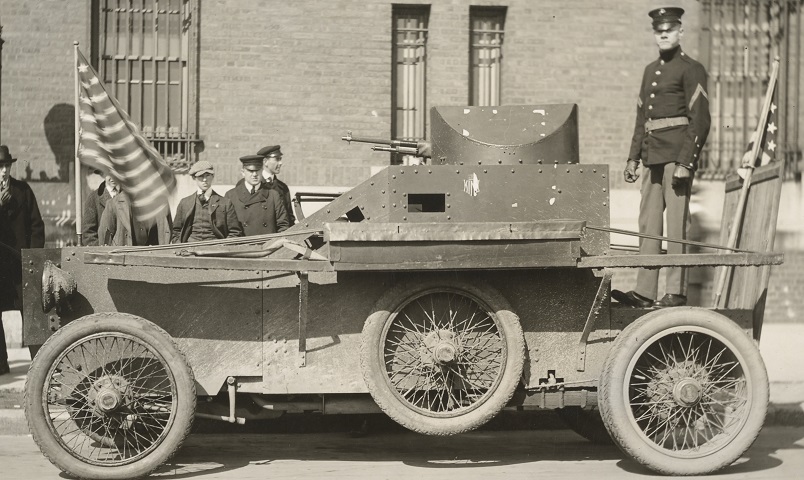
The stepped rear is better illustrated here, where it provides a handy platform for Marine Corps recruiting activities. (Picture taken by Press Illus. Co.; available from the National Archives.)

The sloped rear of this car differs from the stepped appearance of earlier cars. A folding door was provided in the rear plate, and the fender/bridging planks were retained. Note the headlight enclosures mounted on the side of the engine compartment and the different turret design compared to the cars above.
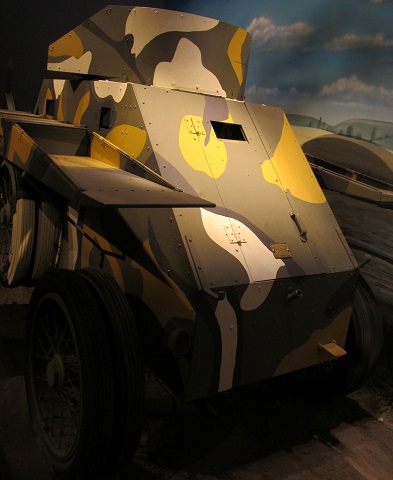
The layout of the rear of the machine, including the rear door with vision port, can better be seen in this angle.

A closer view of the rear highlights the dual rear tires, taillights, exhaust pipe under the car, and footstep on the rear. The spout on the rear plate is presumably for fuel. Note dual spares mounted on the side.
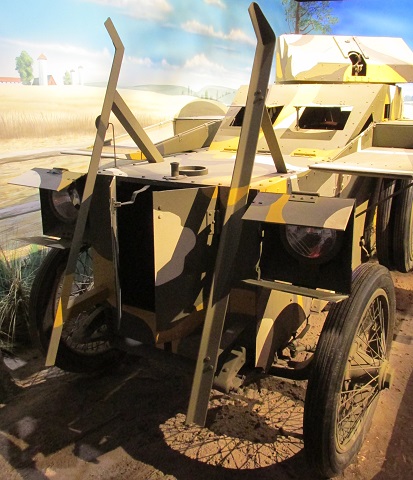
Details of the headlight enclosures and drivers' windows can be seen here. The front wire cutters and bridging ramps were fabricated by the museum staff after careful research.

Hinges on the hood can be seen as well as apertures for the radiator filler.
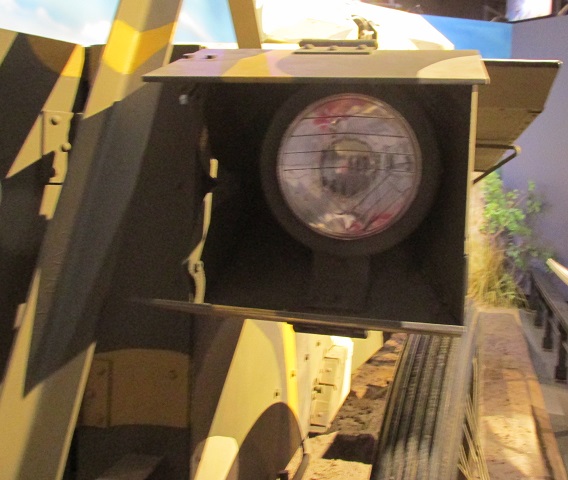
The headlight in its armored enclosure is revealed.
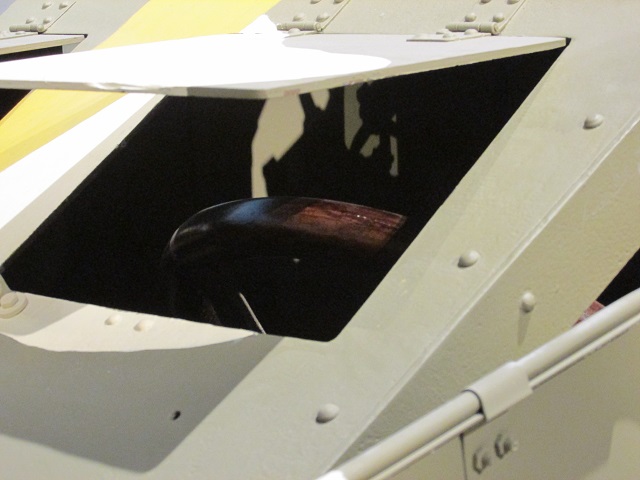
The wooden-rimmed steering wheel can be seen when we glimpse into the driver's window.
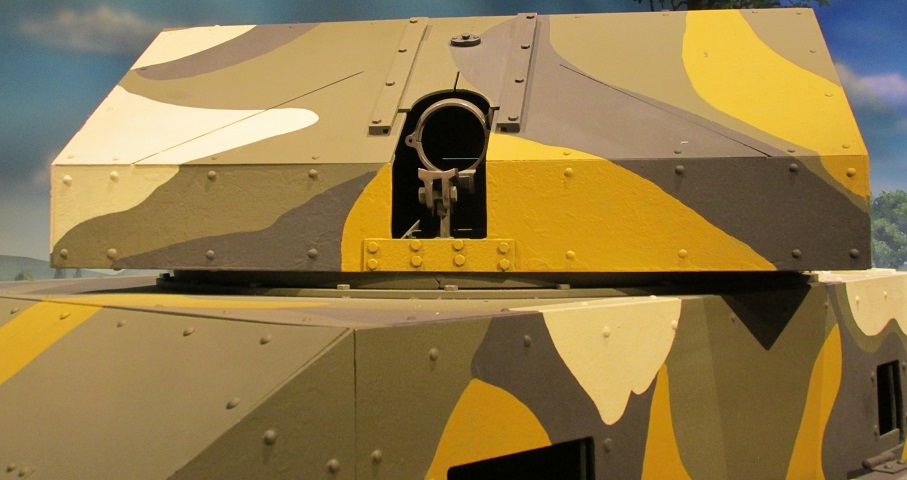
The opening for the turret armament can be seen here.
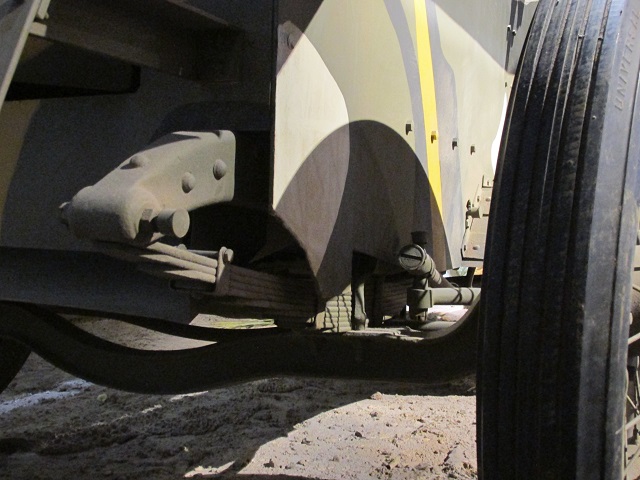
The front axle and leaf spring arrangement is shown in this image.

The mounting of the rear leaf springs is visible, and the exhaust muffler can be seen in the shadow under the car.
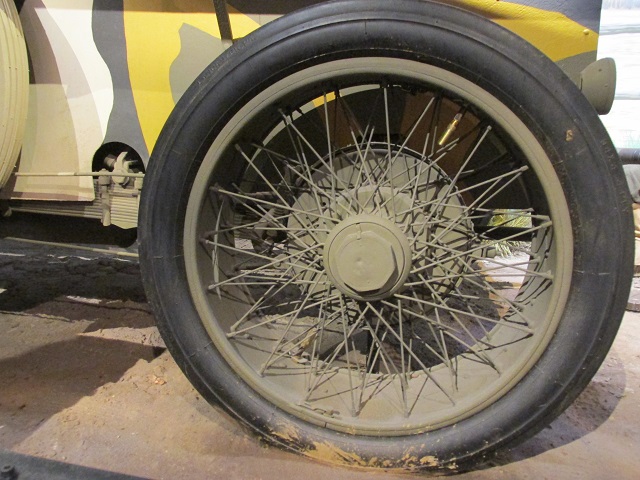
The dual-tired spoked rear wheel is highlighted here.
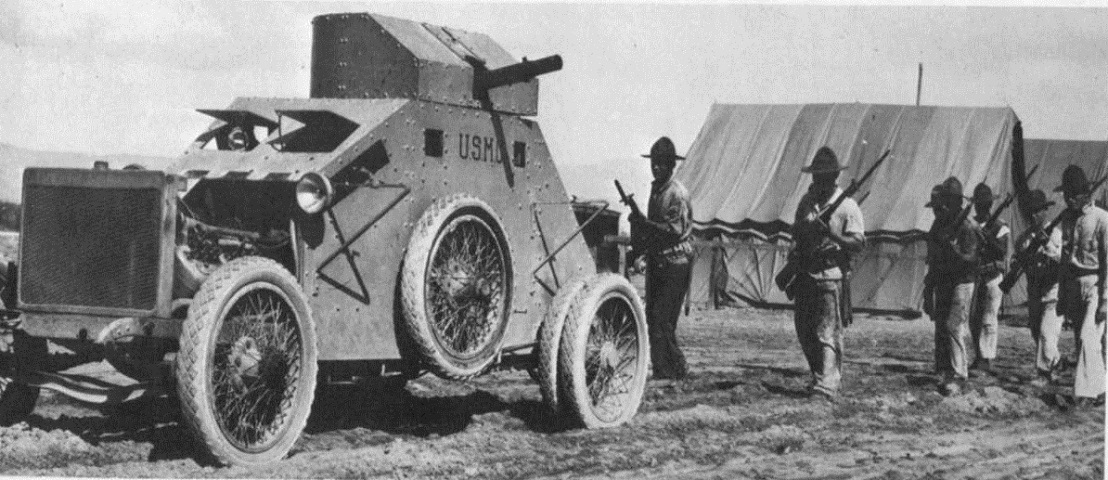
The hood has been removed from this vehicle, presumably for cooling purposes as this scene was photographed during the Banana Wars. This has necessitated the relocation of the headlights, and a spotlight is visible in the window beside the driver. The fender planks are not present, but their mounts remain on the side of the vehicle. This car appears to be armed with a Lewis machine gun. (Picture from Tank Data, vol. 2.)